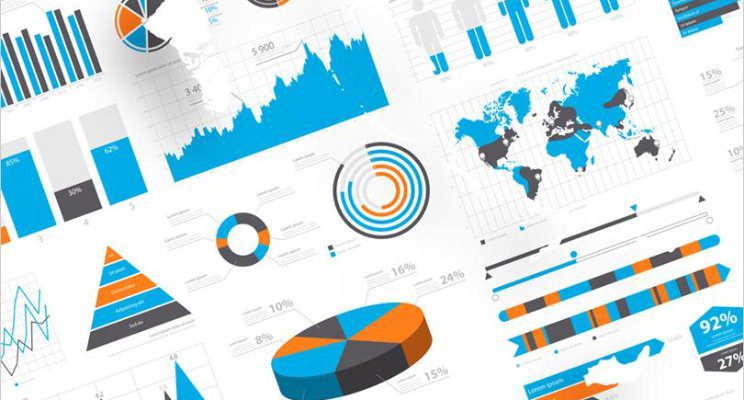 If you are considering a Business Intelligence solution, you ought to give some consideration to the concept of Smart Data Visualization and review your prospective solution to determine its capabilities in that regard. Smart Data Visualization provides many benefits to the organization and to the business users, who will leverage the selected BI tools to gather, analyze, share and report on data. Smart Data Visualization goes beyond data display to suggest options for visualization and plotting for certain types of data, based on the nature, dimensions and trends inherent in the data. It allows users to perform advanced analytics, using sophisticated tools in an easy-to-use, drag and drop interface, with no advanced skill requirement for statistical analysis, algorithms or technical knowledge. Your users can go beyond data monitoring to ‘discover’ subtle and important factors that will identify issues and patterns, and help the organization capitalize on opportunities.
If you are considering a Business Intelligence solution, you ought to give some consideration to the concept of Smart Data Visualization and review your prospective solution to determine its capabilities in that regard. Smart Data Visualization provides many benefits to the organization and to the business users, who will leverage the selected BI tools to gather, analyze, share and report on data. Smart Data Visualization goes beyond data display to suggest options for visualization and plotting for certain types of data, based on the nature, dimensions and trends inherent in the data. It allows users to perform advanced analytics, using sophisticated tools in an easy-to-use, drag and drop interface, with no advanced skill requirement for statistical analysis, algorithms or technical knowledge. Your users can go beyond data monitoring to ‘discover’ subtle and important factors that will identify issues and patterns, and help the organization capitalize on opportunities.
Traditional data visualization is static and while it may offer a choice of graphs and displays, it is not interactive beyond a point. In the traditional scenario, visual representations are not useful in helping users to analyze and understand data or choose the right method to display and report that data for decision-making. Smart Data Visualization allows the enterprise and its users to select and display data in a way that assures accurate interpretation and assumes no technical skill or need for in-depth training.
Interactive Smart Data Visualization tools enable users to identify relationships, patterns, trends and opportunities and to explore detailed data with simple drill down and drill through capabilities. These tools help the organization to integrate and make sense of data from all sources, with a guided approach that allows for swift completion of analysis and reports and reduces the time required for data discovery. Perhaps most importantly, these tools do all of this without the need for programmer or analyst or data scientist intervention or knowledge.
Business users can find and understand data, identify thresholds, hypothesize, and plan, all with the assistance of a business intelligence solution that can find and recommend data views to make the user’s life easier and ensure appropriate interpretation of data.
It is important to note that rich, functional Smart Data Visualization must incorporate cutting-edge technology on the back-end, and an understanding of the user experience.
- How do users perceive and use data?
- How do formats and reporting affect a user’s understanding of data?
- How does a user identify a pattern or trend? How do they analyze and make decisions and what additional information will they need to select a recommendation or an option?
- What is the difference between viewing structured data and compiling and analyzing unstructured data?
- How do various types of data (sales, product development, project management, customer management, construction, stock portfolios, or finance), affect a user’s ability to spot trends and patterns and what kind of reporting, charts, and formats will best illustrate these types of data?
Smart Data Visualization allows you to gather various data components and tell a story that will clarify a problem, identify an opportunity or help to make a decision. In order to build and tell that story, the business user must be able to interact with their analytics software and build the story through guided visualization and recommended data presentation to best illustrate the issue.
When selecting a business intelligence solution and considering the benefits of Smart Data Visualization, it is important to recognize the need for clear, concise information at every level in the organization and the need to accurately analyze, share and present this information without waiting for technical or data scientist assistance. If you want your business users to achieve results, you must provide them with smart tools to help them cut through that mountain of data and find those nuggets of information that will make a real difference in business results.
To read original post, click here
